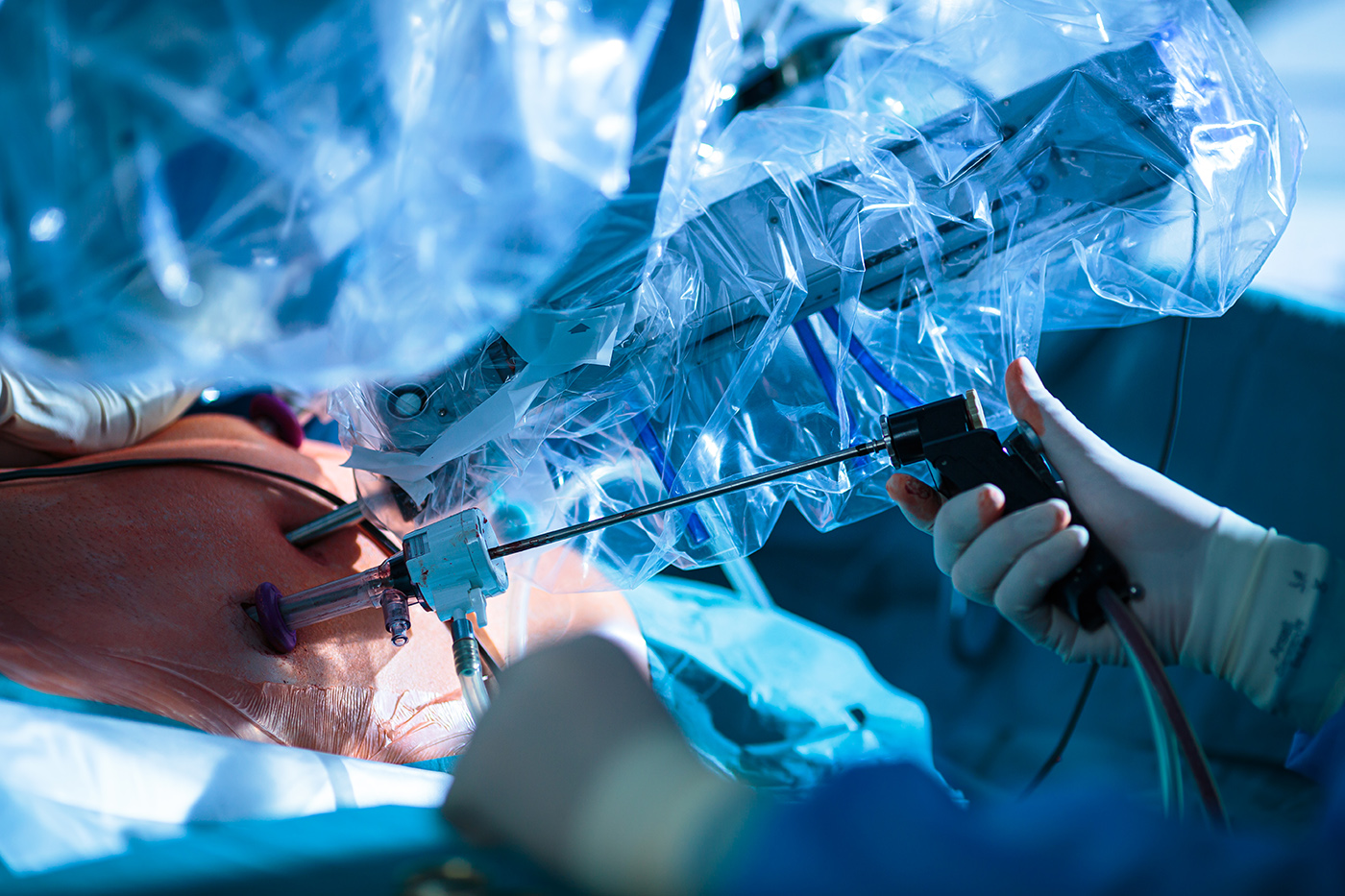
At Wilmington Health, there’s a pervasive sense for recognizing the next great breakthrough in medicine.
Robotic surgery is one such breakthrough. These high-tech surgical procedures reduce invasiveness and eliminate limitations of previous methods. Robotically assisted surgery can also heighten the capacity surgeons have in performing these procedures.
With robotic surgery, surgeons can conduct operations humans can’t on their own, and those they can do, even better. Medical personnel operate as part of a highly skilled team in robotics surgery after completing specified training.
Who could receive robotic surgery care?
It’s used in many disciplines of surgery, including:
- Colorectal, in treatment of the colon or rectum
- Gynecologic, in treatment specific to women and girls, especially of the reproductive system
- Orthopaedic, in treatment of deformities of the bones or muscles
- Urology, in treatment of a variety of urology conditions in both men and women
Robotic surgery procedures are less intrusive and generally lead to faster healing, less bleeding and pain, and smaller scars. Plus, it provides the surgeon a high-definition, magnified, 3-D picture of the surgical site.
“The optics provide 10 times the magnification so the surgeon can see tissues at a level of detail not previously available,” said Dr. Bradford Tyler. “Each instrument allows full articulation so that the surgeon can more precisely perform the technical parts of the operation.”
Robotic surgery allows for more in-patient visits that once would have been overnight stays.
What’s involved with robotic surgery?
First, robots aren’t performing surgery. They’re assisting doctors for precise incisions, retraction, and camera images, with tiny instruments and tubes. These implements are inserted through incisions of 1 to 2 centimeters!
Our general surgeons perform an array of surgeries using robotic technology, such as:
- Procedures for treatment of heartburn and reflux
- Operations for gallbladder removal
- Operations for repair of hernias in the groin or elsewhere in the abdominal wall
Robotics provides surgeons a range of dexterity they couldn’t have on their own. A physician can manipulate the instruments remotely from a console, using foot and finger controls.
And robotic surgery could help patients back on their feet sooner.
“They’ll spend less time in the hospital, have a quicker return to normal activities, and a quick return to work,” said Dr. Gentry Caton, the first surgeon in our region to perform TAMIS via robotic surgery.
Most surgeries take two to three hours under general anesthesia.
What about robotic surgery at Wilmington Health?
Wilmington Health opened an Ambulatory Surgery Center recently, an exciting addition to the practice. It provides another non-hospital surgery option for elective outpatient surgery.
Robotic surgery will launch at the ASC by late 2023.
“The ASC will bring an alternative site for ambulatory surgical care in a cost-effective, quality-focused environment,” said Bradford Tyler, MD, FACS, with Wilmington Health. “It’s driven by patient satisfaction in alignment with the TRUE care aim of Wilmington Health.”
